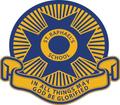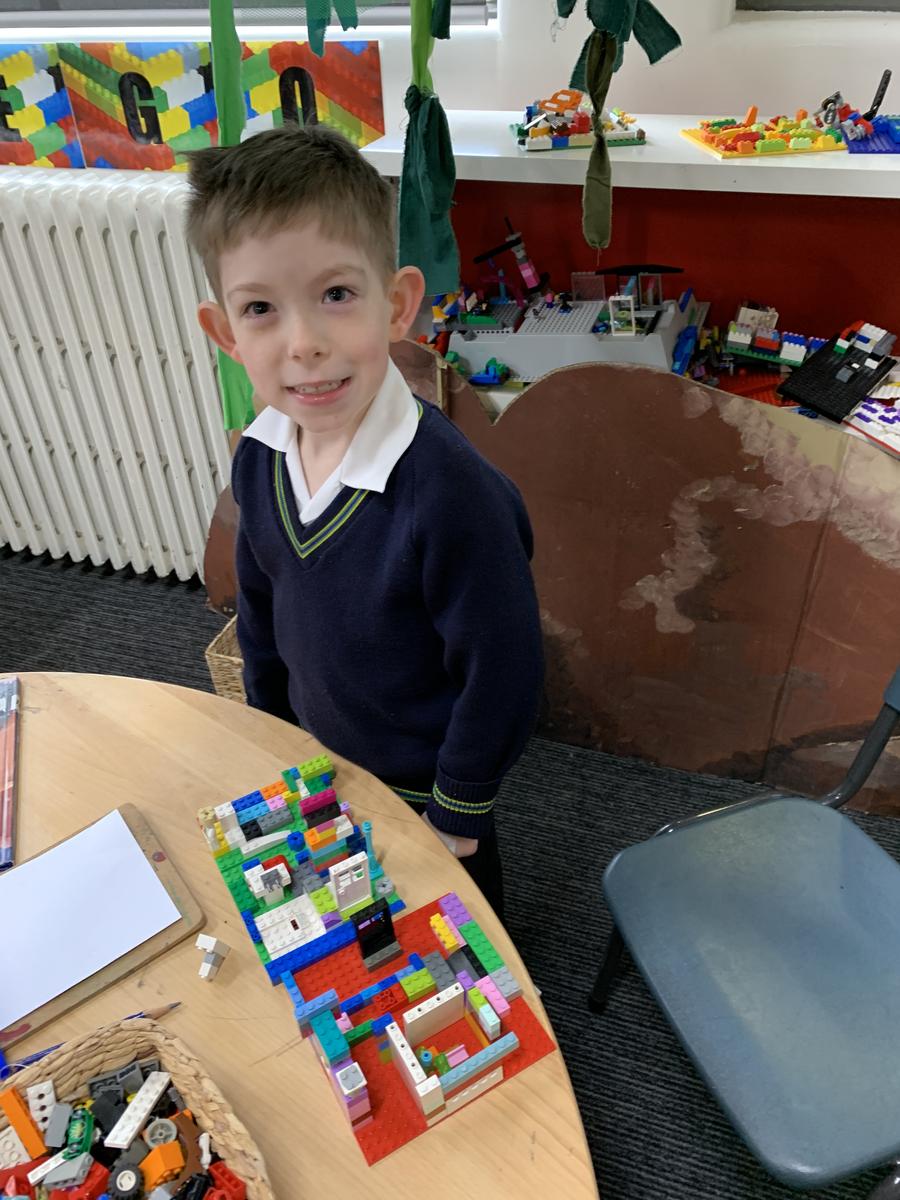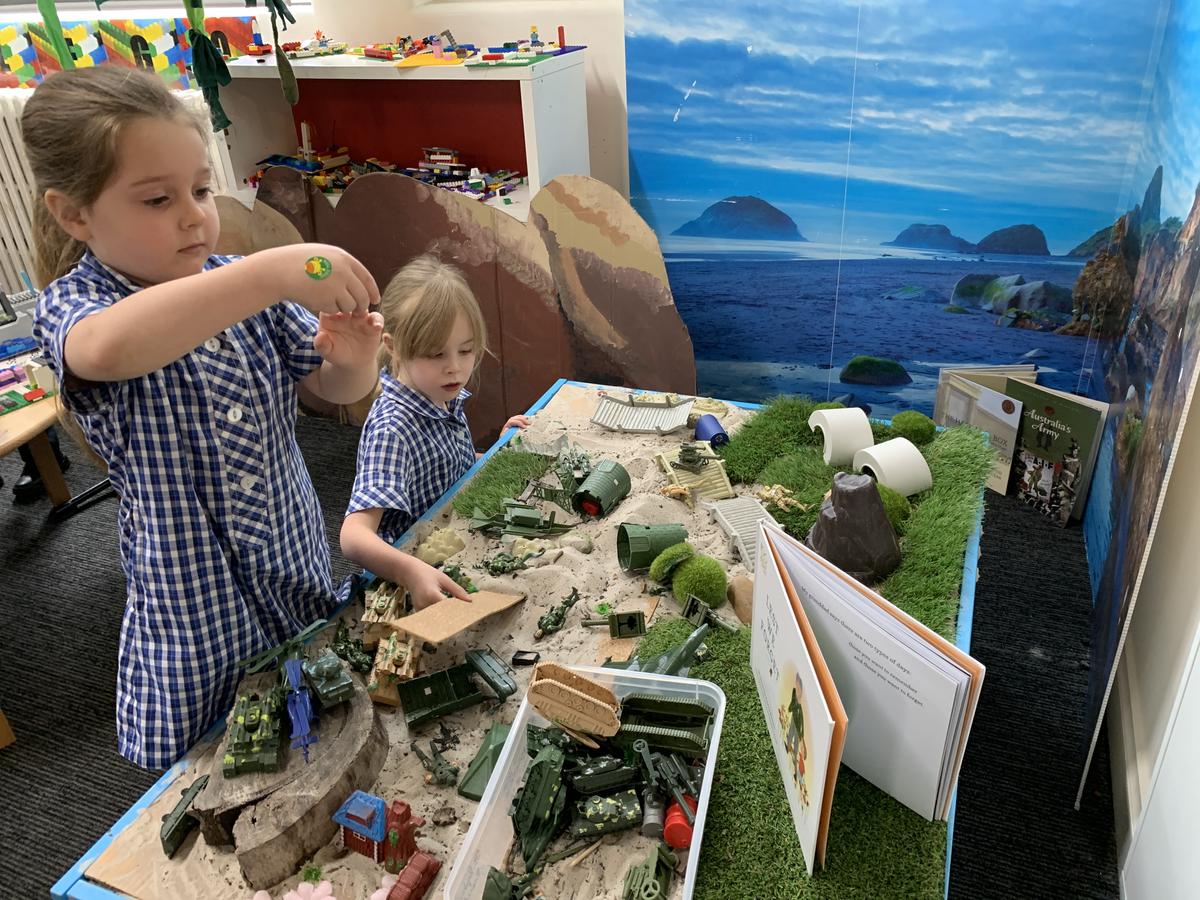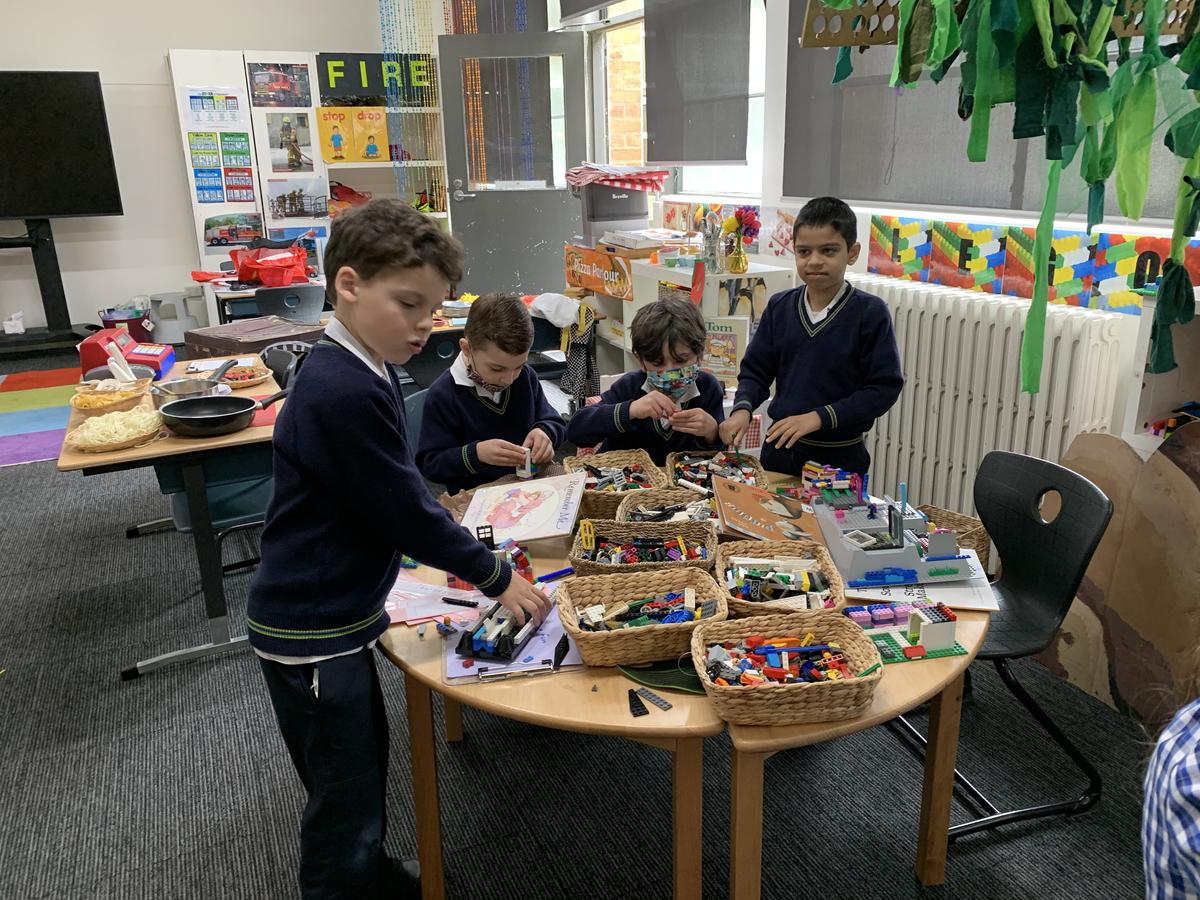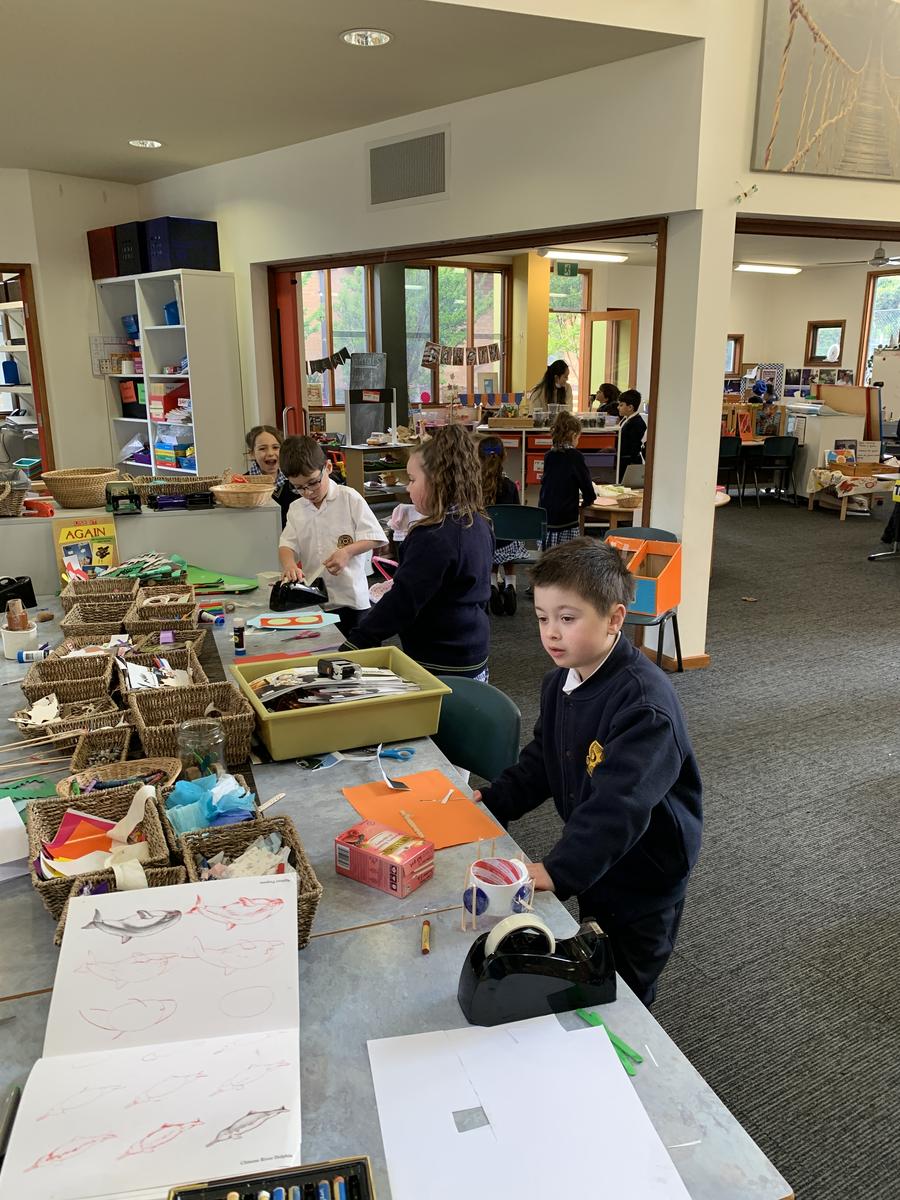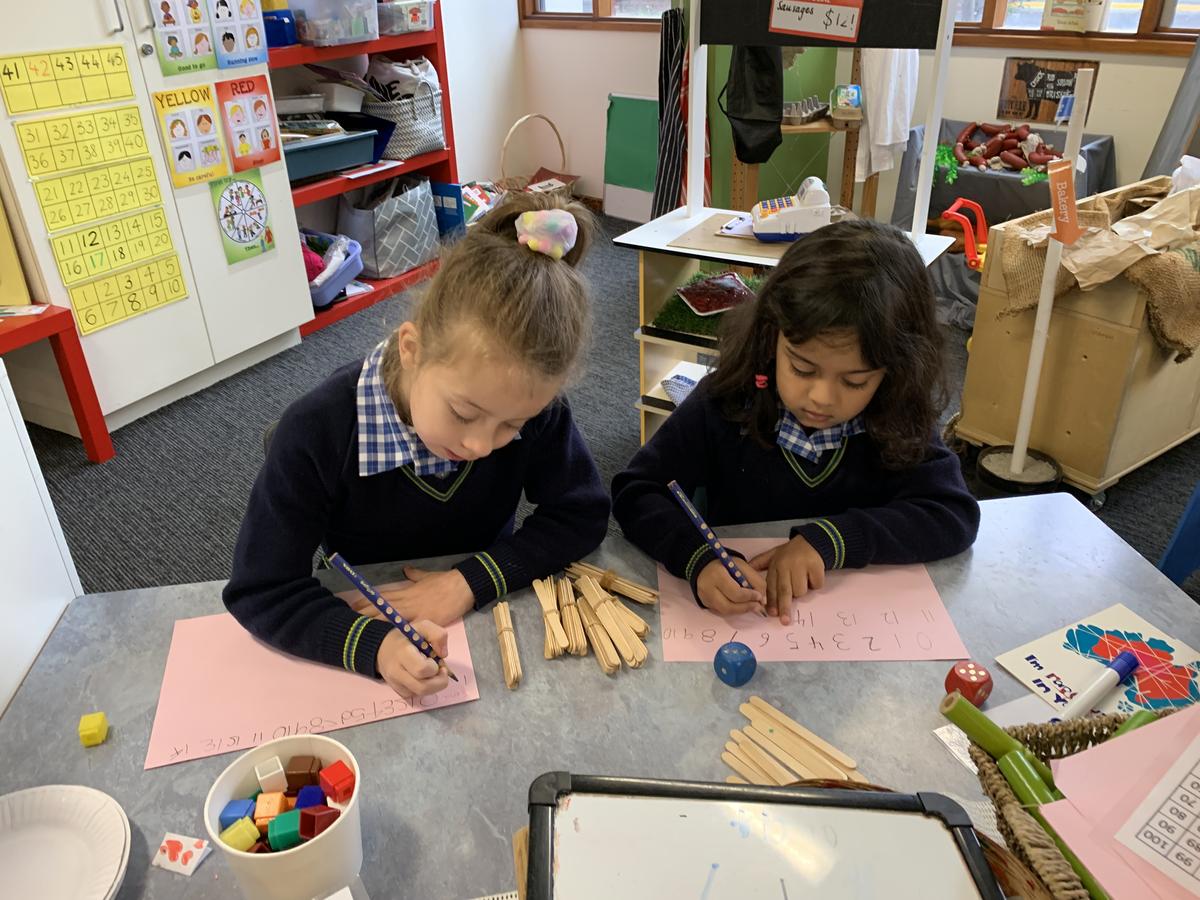Foundation News

What Does Walker Learning Look Like in Foundation?
The Walker Learning Approach pedagogy is an effective and age appropriate pedagogy for our school context from Foundation to Year 2. At St Raphael's, we can meet the particular needs of our early years students by giving them structured opportunities to engage in investigative play.
The Walker Learning Approach uses a range of open-ended experiences to allow students to investigate, explore, manipulate, create and interact along with instruction in skills and knowledge in literacy, numeracy and other curriculum areas. This investigative learning approach places the child at the centre of the curriculum and teaching strategies. It ensures authentic, personalised learning for each student. Formal, explicit instruction in The Australian Curriculum occurs alongside the much more active engagement of students working on their own investigations.
Each day the teacher scaffolds the learning of the students through a ‘tuning in’ process. This is followed by ‘investigations’ in which students work in a learning environment that has been intentionally set up to meet the learning needs and interests of the students. Following ‘investigations’ the students spend time with the teacher reflecting on their learning and making links to the explicit teaching that will occur later in the day.
Rationale
Walker Learning ensures that opportunities for the development of the whole child are authentic, relevant and meaningful for all children regardless of their age, culture, family context, socio-economic background or geographical location. It places an emphasis on the social and emotional aspects of a child’s life as well as the academic aspects.
Walker Learning emphasises:
- personalised learning
- explicit instruction
- skills in literacy and numeracy
- creativity and self-expression
- self-awareness, self-management and self-regulation
The underlying belief behind Walker Learning is that young children learn best when they are highly engaged and motivated. This is achieved best through active exploration and investigation of their environment alongside explicit instruction and scaffolding.
Daily Structure
The Walker Learning Approach comprises three main structural components. These are:
- Tuning In
- Investigations
- Reflection
Walker Learning occurs a minimum of 4 days a week.
Tuning In
The purpose of Tuning In is to prepare students for the learning that will occur across the whole day. The teacher highlights the learning and events that are going to happen that day. The teacher recaps aspects of literacy, numeracy and other curriculum areas from previous learning. Focus Students, Photographer and Reporter are welcomed by the teacher. These students are encouraged to speak and plan with the teacher. They are rostered on regularly to participate and their role forms a model for their peers’ learning as well as their own. Children are dispersed to Investigations with intention by the teacher.
Investigations
Creative and open-ended investigation areas are an integral and essential element of an authentic play based pedagogy. During Investigations students work within the learning areas that have been intentionally planned and set up by the teacher. Teachers work with students during investigations to scaffold, make the links to curriculum areas and develop skills in literacy and numeracy.
Reflection
Reflection is considered the most important aspect of Investigations. Through reflection the teacher ensures that skills and learning are modelled explicitly with students, links are made back to curriculum areas for the rest of the day’s learning and student’s work and investigations are honoured and respected.
Resetting the Learning Environment
The reset is designed to help children to take responsibility for their learning and to demonstrate respect for their learning environment. Students are encouraged to plan ahead and to think about what resources or books they may need for the next day. This promotes continuity and persistence. ‘Work in progress’ signs or a ‘work in progress’ shelf are used to protect students’ incomplete work. Students arrange to take additional photos that may be needed to record work or investigation areas. Packing away should be slow, careful, thoughtful and methodical.
The Learning Environment
The learning environment is a critical element of the Walker Learning Approach. The learning environment, provocations, materials and resources are what provide the richness, engagement and personalisation of the learning for each student. The learning environment provides opportunities for teachers to scaffold and to make links to the learning intentions.
The learning environment is set up with investigation areas. Planned learning within the investigation areas is linked to children’s interests and the learning intentions. The learning intention behind the investigation area will only change every 2 weeks.
The investigations areas are:
• Science/nature
• Tinkering – locks and keys, things that can be taken apart to see how they work, wood and tools
• Sensory – engaging the five senses
• Construction – blocks, Lego, tape measures, sticky tape, etc.
• Reading – cosy, quiet enclosed area for reading
• Collage
• Dramatic play – set up as an authentic context e.g. hospital, shop, vet, etc.
• Numeracy resource – an area where children go to get the tools for learning that they need
• Literacy resource -– an area where children go to get the tools for learning that they need
Other investigations areas can be included if they meet the learning needs and interests of the students.
The classroom is designed to have cosy corners, nooks and crannies so that students feel safe and enclosed. This is known as psychological containment. Teachers define spaces and create rooms within rooms. Major changes to the room are only made once a term.
Every classroom has a carpet area for formal teaching and scaffolding as well as for Tuning In and Reflection.
Students choose where they go and what they work on each day; however it is the teacher who sets up the learning areas as they are carefully planned and set up with intention. Students are allowed to work in the same area repeatedly if they wish as repeating and elaborating leads to deep, structural learning. Students may move around the investigations areas when they are ready. The teacher may make a decision to move a child but this must be intentional and have a good reason.
60 to 80% of the learning that occurs during formal teaching is linked to what has happened in the Investigations. Teachers make these connections explicit for the students.
Focus Children, Reporter and Photographer Roles
The Reporter and Photographer roles are a very important and integral part of the Walker Learning Approach pedagogy. Each day different students are rostered to perform these roles. The tasks the students are given are relevant to the current learning intentions and to the individual needs and interests of the students involved. They are designed to be engaging, intentional, fun and special for each child.
The purpose of identifying Focus children each day is to develop relationships with students and to scaffold their learning through their authentic interests. Each day three students are scheduled to be the focus children for that day. The students and parents are familiar with the schedule and know when it is their turn. Over a two week period the teacher connects with every student in the class and makes notes on the student’s progress and interests.
Poetry in Prep
Recently, students in Foundation were introduced to poetry as a form of writing. Poetry is language that is written following specific patterns, rhythms, structures, and/or rhymes to express ideas and emotions. Poetry is usually used to express deep, dramatic, exaggerated, and intense feelings, emotions, or ideas. Over the past week, students in Foundation enjoyed listening and responding to different poems. They identified the structure of different poems and had fun brainstorming ideas based on different topics. Students then practised composing poems of their own. We invite you to read some of our students' poems below:
School
What I like about school is we play a lot,
We have good friends,
We never give up.
We have good teachers,
Wow!
School looks cool!
By Luca (FL)
Dogs
Dogs are smelly.
Dogs get flees.
Dog say "Ruff Ruff".
Dogs like balls.
By Jenelle (FP)
My New Car
I have a new car,
It has big wheels.
It is snuggly,
It is a Subaru.
It can go in a big puddle of mud,
It just has an i-pad,
I love my new car.
By Julian (FL)
Gorillas
I am strong.
I am black and live in a cave.
I eat leaves and bananas.
I can punch trees with one hand.
I am big!
By Emmanuel (FP)
My Mum
My mum is very nice,
She is careful like air.
Every night she tucks me into bed,
And every night she cooks me dinner.
She always says "Don't give up!"
She always says "I love you!"
And I say, "Me too, I also love you!"
By Indianna (FL)
My Toy Car
My toy car can drive,
It's cool,
It's fast,
It can go on small roads,
It's fun,
I love my toy car!
By Samuel (FL)
Dog
My dog is cute,
I play with my dog.
She is a girl,
She is my best friend,
I sleep with her.
I love my dog.
By Francesca (FL)
Milly
She's as important as food,
Cuddles as soft as fur.
Nearly as fun as friends,
Sleeps as good as me.
I love Milly!
By Zoe (FL)
Pig
Pigs are fat.
They eat laying down.
Pigs are bacon.
Pigs live in a barn.
By Alicia (FP)
Mum and Dad
My Mum'sname is Emily,
My Dad's name is Noel.
My Mum and Dad are nice,
My Mum is fun and my Dad is playful.
My Mum is sweet.
By Isla (FL)
Woolworths' Bricks
You get to build a little truck,
I feel happy when I play with my Woolworths' bricks.
Woolworths' bricks are fun to play with,
There is a big supermarket.
There are people.
Woolworths' bricks!
By Lincoln (FL)
New Car
The new car is fun,
The new car goes fast.
The car can go anywhere.
My car is pretty full!
By James (FL)
Toy Spiderman
My toy is Spiderman,
He has a web shooter.
He is cool, he is hard,
He can bend and his head can go up.
I love my toy Spiderman.
By Domenic (FL)
At My Yaya's House
At Yaya's house we played some games,
My friends also came over.
We ate ice-cream cake,
It was very yummy.
Yaya's house is really fun,
I hope I do that next time.
By Theo (FL)
Religion
This Sunday, 28 November is the first Sunday of Advent. Advent is a time where we prepare for the celebration that commemorates the birth of Jesus Christ. Students in Foundation created an Advent wreath, symbolising God’s everlasting love. There are 4 weeks of Advent, with a different Advent candle representing each week. One candle is lit at the beginning of each week of Advent. There are 3 purple candles and 1 pink candle. During the first week of Advent, we light the candle of HOPE. It couldn't possibly be a more timely occasion to focus on hope.
Important Dates
Whole School Assembly- Friday 26th November 2:30pm via Zoom
Head Start Week- Monday 6th December to Friday 10th December
Sports Day- Thursday 9th December
Last Day of School - Wednesday 15th December (1 pm finish)
Week 9,10 & 11 Timetables
Week 9,10 & 11 Learning Intentions
Staff Contacts
Linda Pham (FP) lpham@srprestonwest.catholic.edu.au
Lorraine Uzunovski (FL) uzul@srprestonwest.catholic.edu.au
Please note, we will respond to emails Monday to Friday, between the hours of 8am- 5pm.
